#Belgrade fortress
Explore tagged Tumblr posts
Text
Nebojsa Tower, Kalemegdan Fortress, Belgrade Serbia.


#Nebojsa Tower#Medieval#Cannon Tower#Dungeon#Belgrade Fortress#Kalemegdan#Cloudy Sky#Wild Flowers#Kalemegdan Park#Blue Hour#City Lights#Belgrade#Serbia
90 notes
·
View notes
Text

Guard tower, Belgrade Fortress, Serbia -(Стражарска кула, Београдска тврђава, Србија), 2024.
Much of the ancient fortress, which was decommissioned more than a century ago, is in poor repair, and this tower looks like a reconstruction.
12 notes
·
View notes
Photo

In Belgrade's embrace where the rivers entwine, golden sun spills like honey on cobblestone lined. The Danube whispers secrets to silken twilight air, While whispers of history dance in the square. Cherry blossoms flutter, painting soft shades of pink, and the laughter of children is a sweet song to drink. Underneath the fortress, where echoes of dreams weave, idyllic moments linger, in a tapestry of leaves.
Discover more travel tips for City Breaks in Europe: book24h.online
0 notes
Video
youtube
# visit Belgrade - Serbia
#youtube#visit Belgrade - Serbia Belgrade travel Serbia tourism Belgrade nightlife Kalemegdan Fortress Knez Mihailova Street Skadarlija Belgrade food
0 notes
Text
The fortress of Belgrade
We started our discovery tour of Belgrade with a walk to the fortress. Usually a fortress or castle stands at an elevated place and you’ll get a good view of the city. That was also the case in Belgrade. To reach it from our hotel (central, large rooms, no breakfast, cheap), we basically had to walk through the whole center until we finally arrived at the castle. Since everything is easier with…

View On WordPress
#Belgrade#fortress#hotel#long weekend#Serbia#Southern Europe#travel#traveling Europe#traveling with friends#weekend trip
0 notes
Text
LIMITED OFFERS From Belgrade: Golubac Fortress and Iron Gate Gorge Tour

Discover the Hottest Trend in Travel - From Belgrade: Golubac Fortress and Iron Gate Gorge Tour! , Are you searching for a travel experience that will ignite your sense of adventure and leave you with unforgettable memories? Look no further than From Belgrade: Golubac Fortress and Iron Gate Gorge Tour - the hottest trend in the world of travel!From Belgrade: Golubac Fortress and Iron Gate Gorge Tour has taken the travel industry by storm, captivating the hearts of explorers and wanderers from all walks of life. Its unique blend of excitement, authenticity, and cultural immersion has made it the must-have experience for discerning travelers like you.Time is of the essence! The popularity of From Belgrade: Golubac Fortress and Iron Gate Gorge Tour continues to soar, and tickets are selling at an unprecedented rate. Don't wait until it's too late - secure your spot now and ensure you don't miss out on this incredible journey.Prepare to be enthralled by the wonders of From Belgrade: Golubac Fortress and Iron Gate Gorge Tour. Picture yourself embarking on thrilling adventures, discovering hidden gems, and immersing yourself in the local customs and traditions of each destination. With each step you take, you'll be creating memories that will last a lifetime.For a comprehensive overview of From Belgrade: Golubac Fortress and Iron Gate Gorge Tour, including a detailed itinerary, a captivating photo gallery, and testimonials from our satisfied travelers, please visit our website at [ https://thingstodo9.com/from-belgrade-golubac-fortress-and-iron-gate-gorge-tour/ ]. As a bonus, you'll also find an exclusive Discount From Belgrade: Golubac Fortress and Iron Gate Gorge Tour offer available only to our online visitors!Join the ranks of those who have experienced the magic of From Belgrade: Golubac Fortress and Iron Gate Gorge Tour firsthand. From the moment you set foot on this extraordinary journey, you'll be greeted with unparalleled hospitality, knowledgeable guides, and a sense of awe that will stay with you long after the tour ends.Ready to embark on the adventure of a lifetime? Don't hesitate! Contact our dedicated customer service team at [ https://thingstodo9.com/from-belgrade-golubac-fortress-and-iron-gate-gorge-tour/ ] to secure your tickets for From Belgrade: Golubac Fortress and Iron Gate Gorge Tour or to inquire further about this incredible experience. They are standing by, eager to assist you in planning the trip of your dreams.Time is running out! Secure your place on From Belgrade: Golubac Fortress and Iron Gate Gorge Tour now and prepare to embark on an unforgettable adventure that will surpass all your expectations.
0 notes
Text
Portal of fear in the Belgrade Fortress

One of the many portals of Kalemegdan Fortress in Belgrade has been closed and hidden forever. Here is its story. Some say it's true, others say it's fiction, but it dates back more than 500 years.
The fortress dates back centuries, originating in the Roman period. Turkish rulers renovated it, but left certain parts untouched. Interestingly, they constructed double walls around some tunnels, despite their lack of defensive significance. According to legend, the Sultan sent his personal envoy from Istanbul to investigate delays in construction. Workers, despite offers of gold or threats of death, could not be kept on the site. Several workers never exit tunnels. Those who returned, pale with fear, could only mutter "Shaytan" (Devil) in response to their terrifying experiences.
The legend continues into the Second World War. A German Wehrmacht captain, who rediscovered the portal, entered with two soldiers. A few days later, he was found near the Danube River with one soldier, both in a state of panic despite their war experience. The second soldier was never found. They claimed to have escaped by diving into the Danube and swimming towards daylight. According to their account, they were trapped in a different world, where they lost their sense of time. The surroundings were grotesque and inverted, and the beings there caused pain merely by looking at them. It was worse than hell.
The German occupation forces suspected that their men had been captured and drugged by Tito's partisans. The Gestapo investigated the case but reached no conclusion. However, the entrance was sealed with concrete. The Gestapo archive was moved from Belgrade in 1944 and subsequently handed over to Allied forces, who denied possession of the documents and claimed they were returned to Yugoslav authorities.
After the Second World War, the Yugoslav secret police concealed the portal using the fortress's stone materials to keep it hidden from the outside. However, the portal remains there to this day.
Some people believe that this was the main reason why Belgrade never built and dug any metro lines, while other Balkan capital cities did. People say that even the communists of the Yugoslav secret police were afraid of opening the entrance into Hell.
The construction of the Belgrade Metro is set to begin in 2025.
Will evil be unleashed once more?
24 notes
·
View notes
Text
[ENG TRANSLATION] Joker Out, or the return of faith in the power of music:
Original article written by Žikica Milošević for EXIT 13.07.2024. English translation by IG irenalemajic, proofread by IG gboleyn123

The second night of Exit Festival 2024 on the Tesla Universe stage was literally and thematically dedicated to pop music, specifically 'classic', 'old school' pop music. The most significant stage of the festival was marked by performers from Slovenia and Vojvodina, so the north of former Yugoslavia demonstrated how to create an atmosphere and memorable songs.
And it began powerfully, while the sun above Petrovaradin Fortress, after another day of being merciless, was still blinding the performers, because Astrid & The Scandals got on the stage at 7:30 p.m. restoring our faith in alter-pop, as well as in Slovenian talent to produce hitmakers. In the old Yugoslavia, Slovenians were always at the forefront of musical breakthroughs, dictating trends along the Ljubljana-Zagreb-Belgrade axis. Independent Slovenia no longer had a lead role and for many decades we did not hear performers similar to Laibach, Pankrti, Lačni Franz or Buldožer, but the situation has abruptly changed in the past few years.
Instead of avant-garde and peculiar performers, hitmakers and creators of great pop music are now coming from Slovenia. The bouncy Astrid energetically announced the 'new era', adding oriental elements to her music, dancing seductively and delivering vocal virtuosity. Undoubtedly, she is 'the next big thing' in pop music in the region, and with a bit of luck, in Europe as well.
It has not happened for a long time, that the atmosphere becomes so 'heated' already at 8 p.m, but Astrid had already raised the temperature and the girls in Joker Out T-shirts were in the front rows even during the performance of Ljubičice, which perfectly continued the series of performances this evening. Their concert is a kind of poetic justice - they were supposed to lead the Main Stage at Exit in 2019 at 8 p.m. but unfortunately, the storm cut the program short and 'plucked' them from the lineup.
In the meantime, the band from Pančevo, which is composed of the two Stevanović brothers, who got a classical music education, has grown into a trio, since Olga Petrović has recently joined them as the 'third flower' in their little bouquet. There's an old saying that 'Vojvodina is Britain and Belgrade is America' in music, and pop bands from Vojvodina are widely known for their fresh melodies and hit potential and Ljubičice who, with their 'brotherly and neighbourly' band Buč Kesidi, began to conquer the region even before the pandemic, gaining fame with the song 'Jedva čekamo rat ljudi protiv mašina'. Ljubičice are the kind of pop band we've needed for a long time, and if their songs reminded me of anything, it is the sunset in summer...of 1983. A mixture of funk, synthwave and nostalgia, combined with guitar and bass skilfulness, gave us an excellent overture for what will happen later. Vuk reminded the audience that they performed at Exit back in 2014 on the Jack Daniels Stage, when they were young and relatively unestablished – and now they command the stage as if they were born to it.
And then - Joker Out, heartbreakers from Ljubljana, form with substance, the best of both worlds. It was clear to us what to expect when, at the mere hint of their entrance, the screams of the girls began, which I remember from the documentaries about The Beatles. Love messages on cardboard signs, choral singing, fantastic communication between the band and the audience were evident right from the opening song, 'Katrina'.
Joker Out are much more raw and more guitar-driven during their live performances than on their 'polished' recordings and the influences of bands such as Arctic Monkeys or The Strokes are evident.
On the other hand, the fascination of the female part of the audience is completely understandable, because besides the fact that they really know how to play, all five members have a 'superstar vibe', in the way Duran Duran or Spandau Ballet once had the same vibe. I believe that the last time such a reception was registered was during the era of boy bands 20+ years ago, but the Jokers are anything but a boy band. Singer Bojan Cvjetićanin probably 'reaped' the biggest 'harvest' of love from the audience, but the other members are not that far behind.
Slovenian is 75% understandable when read or spoken, which drops to 50% when sung (and when thousands of girls are singing along with Bojan), but it's clear that the lyrics are engaged in a way similar to Buč Kesidi – precisely dissecting the everyday life of young people in a big city, their disappointments, dates, breakups, loves and sorrows...
Bojan won the hearts of the local audience from the very beginning by addressing them in Serbian and he also managed to make a 'population census' among the attenders. We saw that (incredibly loyal fan base) quite a number of spectators came from Slovenia, but that there were even more people from the other parts of the former Yugoslavia and even those who understand none of our languages - simply driven by their love for the band that gained wider popularity at Eurovision in 2023.
The Jokers did not hide their exitement to perform on this already legendary stage.
The concert continued with a series of songs that are 'friendly' for parties, bedrooms, the beach and the radio - 'Plastika, znanstvena fantastika' and Bojan's sharp analysis of the 'culture' of plastic beauty made me look around and conclude that none of the girls in the audience were 'plastic' - which is a breath of normality and freshness we've been lacking now that we are wrapping up the first quarter of the 21st century. A better future is still possible, even though a worse present is dominant.
Joker Out jokingly call their style 'shagadelic rock' (translate it by yourself, but watch Austin Powers first), but there is nothing funny about their music. All of their songs are in Slovenian, except for two they performed in Serbian¹ (Bojan’s background allows him to play with languages and easily switch from one to another) and one in English.
In the song 'Tokio', they took us to Japan and sang part of it in Japanese too, previously teaching a 'little course on love expressions in Japanese.'
'The song that brought us here – 'Carpe Diem'!' – Bojan shouted and the audience received an infusion of energy and joy. Indeed, it was almost unimaginable 20 years ago that a 'schlager festival' would produce new stars and headliners, but Eurovision has become just that – a springboard. And it doesn't matter that they were 21st in the competition. Who cares about numbers – some performers are there to win points during the competition and some are there to conquer the world after the competition. The last song, 'Šta bih ja', was perfectly timed to be released on Friday, on the day of the concert – and it tells us, somewhat in the manner of 'Arctic Monkeys listening to Sarajevo pop', about the experience of life in London.
Joker Out brought 'sexy' back to pop music. We didn't lack cheap sex appeal all these years, but we did miss sophisticated and rock sex appeal. They brought the classic pop formation back big time – and we've missed it. They brought the energy back to the stage, female fans who travel to see them, scream their names and know all the songs by heart.
I can imagine the 'good old' days of girls' bedrooms decorated with their posters. Even if they hadn't recorded a single good song, all of this would have been enough and refreshing. But they recorded plenty of good ones. And somehow I believe we witnessed history and the beginning of a 'stellar' story with five guys from Ljubljana in the lead role.
¹In this case, the author of this article is referring to two songs that have already been released in Serbian, 'Ona' and 'Demoni'.
The band now has three songs in Serbian, including 'Šta bih ja'.
#joker out#jokeroutsubs#bojan cvjetićanin#bojan cvjeticanin#jan peteh#nace jordan#kris guštin#kris gustin#jure macek#jure maček
28 notes
·
View notes
Text
авантура Цанмома у Београду
avantura Canmoma u Beogradu, or, the adventure of canmom in Belgrade
it's another one of these 'travels of canmom' posts! last time we went to Gamescom in Germany. this time I went to Belgrade for a company event.
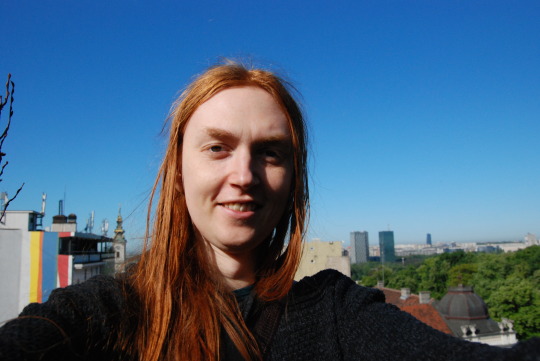
I can't actually talk that much about this one because the main thing I was doing was cooking up game pitches for what we might work on next (kind of like a game jam but just for concepts), and while that was very interesting and I learned a lot about how to get ideas across in limited time and make judgements about what videogames might sell and how long they'd take to make and such... it is however probably not something I can talk in too much detail about yet, because we might end up making these games, so I can't be like 'the theme was x and we pitched y'.
so instead I will mostly talk about Belgrade! and show some of the photos I took that don't have game developers wandering around in them.
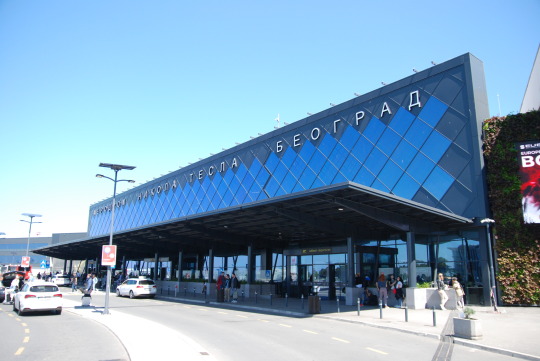
that's Nikola Tesla airport. did you know that Nikola Tesla was from modern-day Serbia (at the time, the Austrian Empire)? I didn't but I do now!
most of the week was spent in this fancy villa...
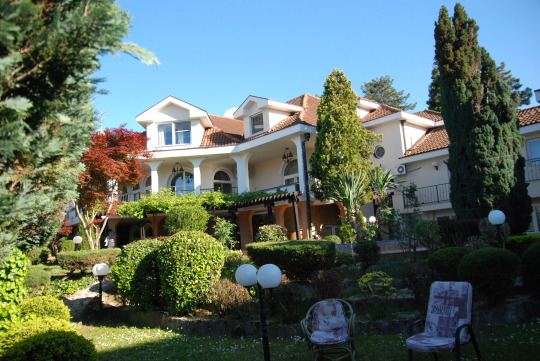
...which is called the Villa Saga Paradiso. it must once upon a time have been some stinking rich family's holiday home, because it's a super weird building, with such features as a pool table, swimming pool, tennis court, library, and even a weird kinda stage thing on the top floor. definitely full of weirdly shaped rooms and interesting old furniture, it felt kinda like a place a moomin might hole up. so here's some pics of the place.
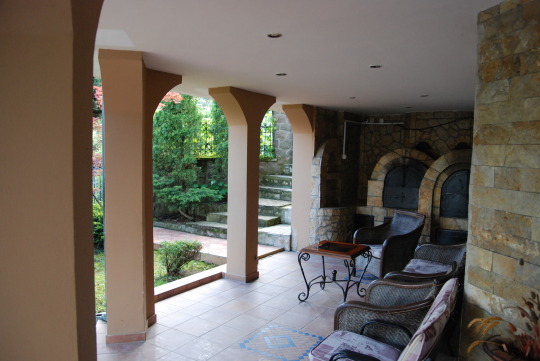
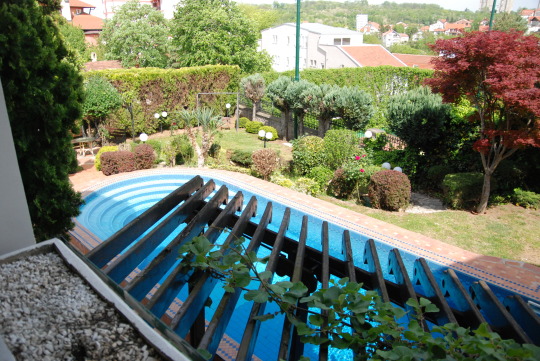
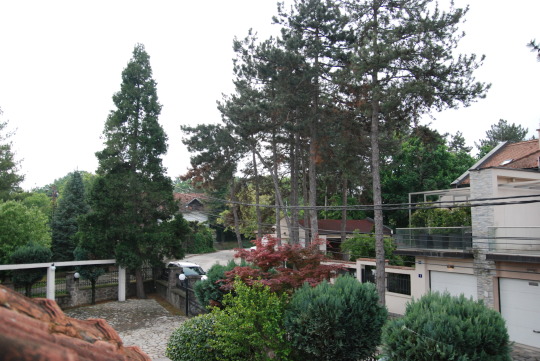


also the view was kinda insane...
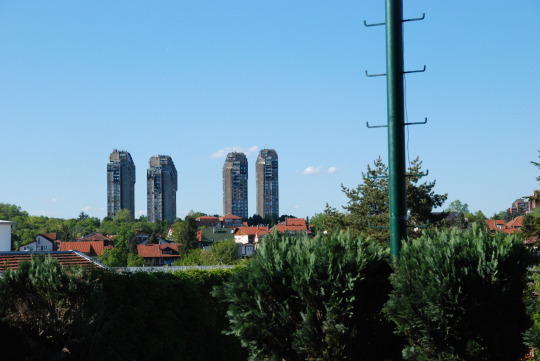

also! here's a pic of a Serbian snail that came out rather nice:
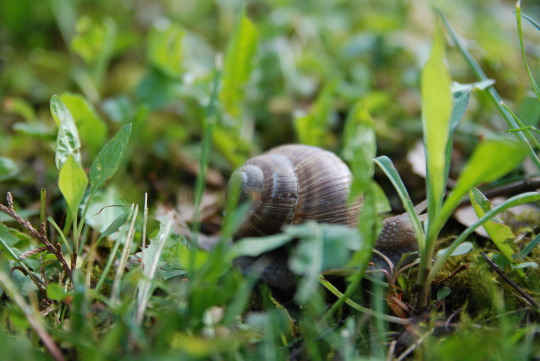
anyway on Saturday we went into the city centre to do some more touristy shit. I went to the two places in Belgrade that presumably everyone goes, namely the Fortress and the Temple. but I also got some shots of the city centre...
(also a tram shot for the trams girls in the audience)
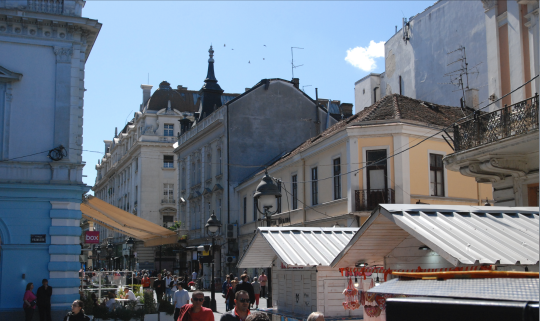
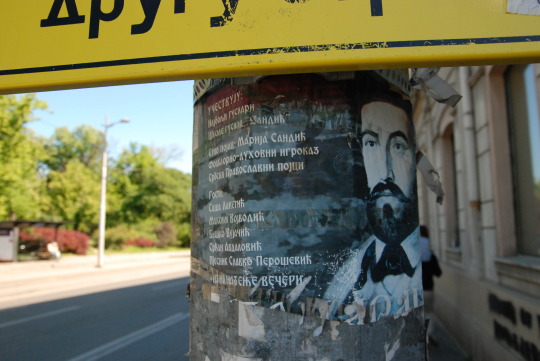
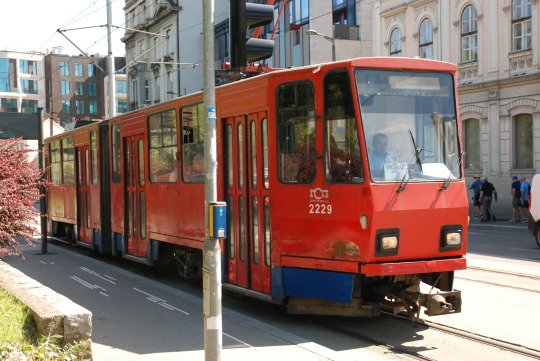
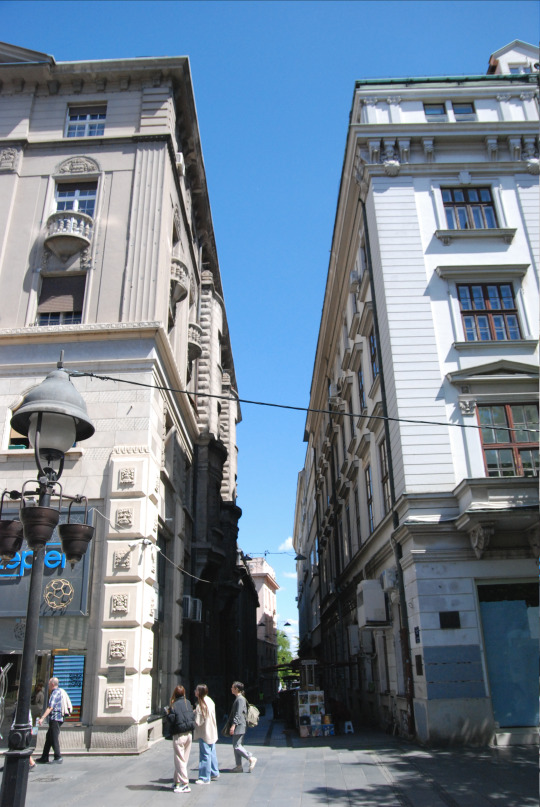

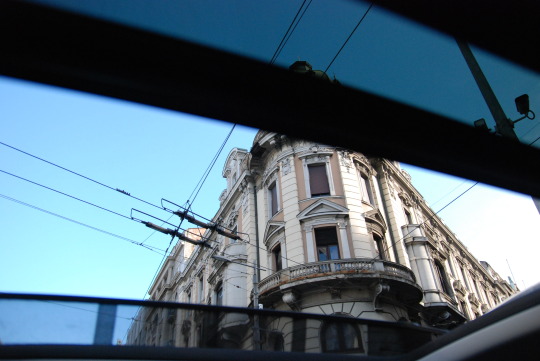
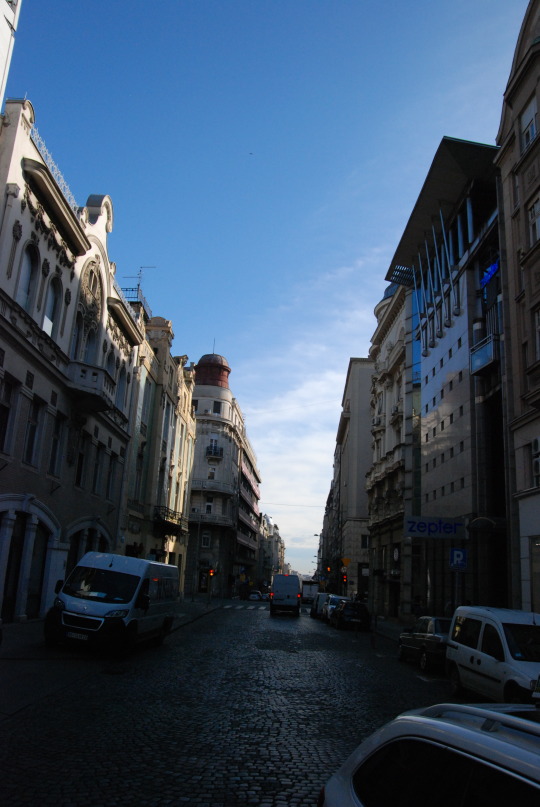
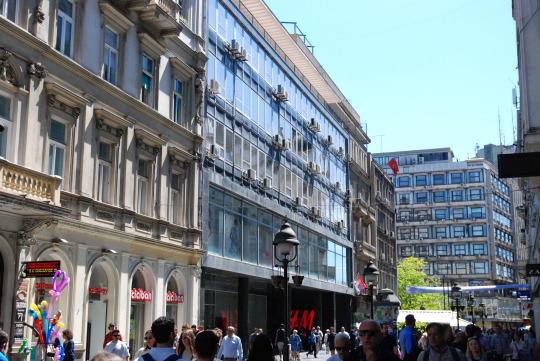
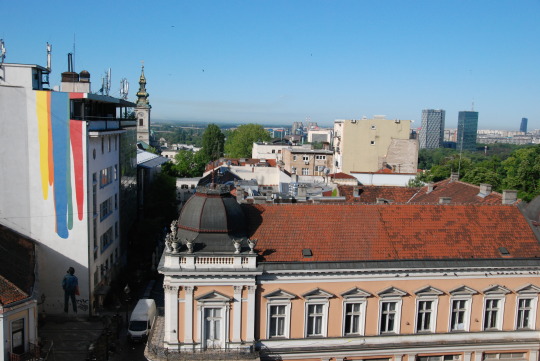
so as you can see, the vibes of central Belgrade are p Southern European sorta architecture, lots of pale stone walls and tiled roofs and the like. but you also have these crazy cool looking tower blocks from the communist period...
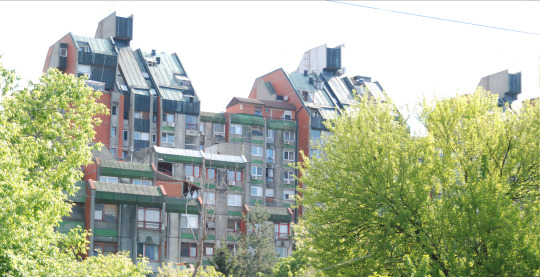
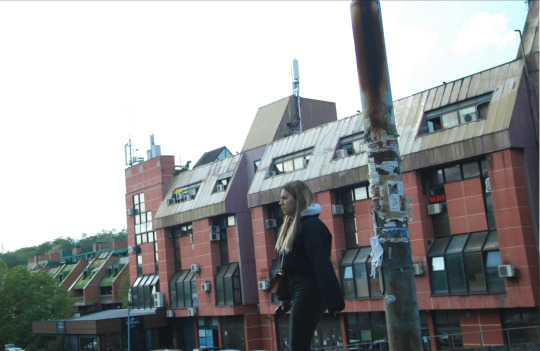
...which were unfortunately quite hard to photograph out of a moving car window.
But yeah, we were on our way to the fortress.
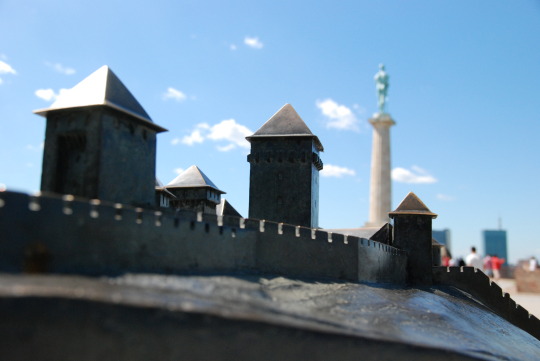
Belgrade Fortress has a pretty storied history. At one point it simply was Belgrade; even after that, it's been occupied by variously the Byzantines, Turks and Austrians, who all made various additions and modifications to the fortress, and sometimes accidentally blew it up. Nowadays it's become a kind of park and tourist area, surrounded by the river, and thus some pretty impressive views...
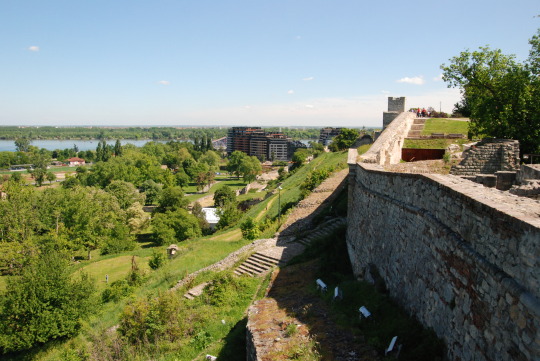
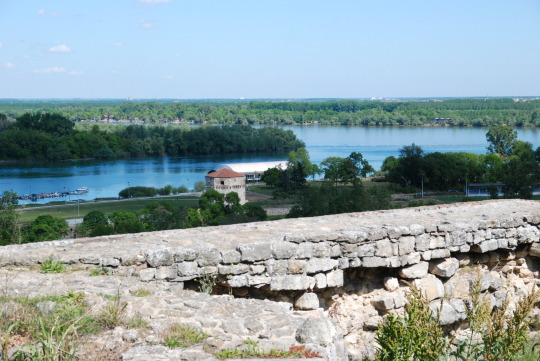
as well as various things that tourists might like to look at, like statues of dinosaurs and tanks, and people dressed Historically.
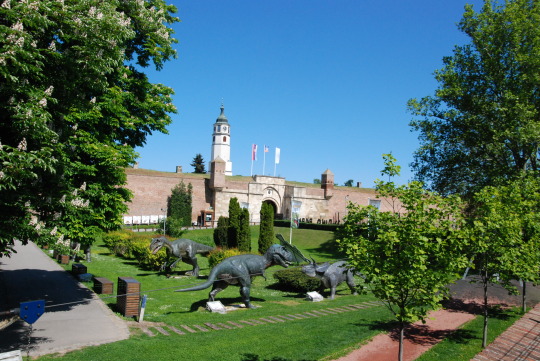
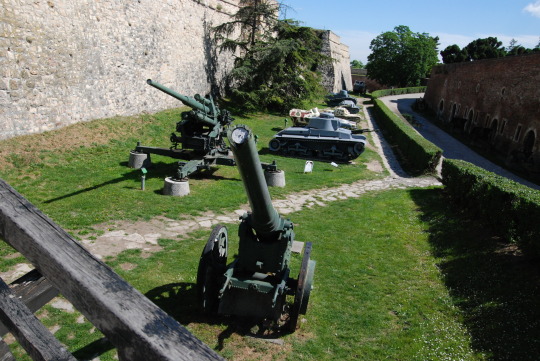
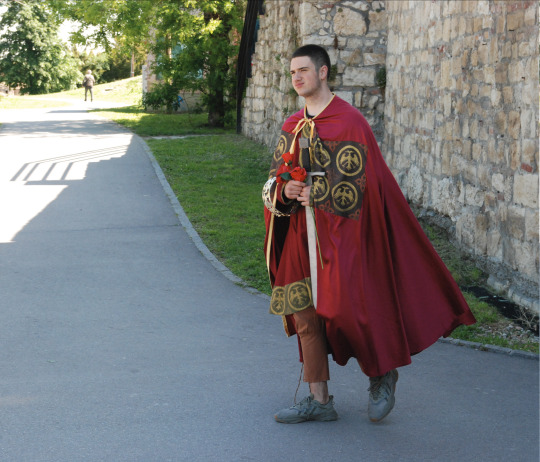
apparently you're only allowed 30 images in a post, so let me make another one for the Temple, which was the craziest building I saw, and the butt statue...
33 notes
·
View notes
Text






Theater of war in Serbia and Banate of Temeschwar, map by Johann Baptist Homann from 1717 with miniature depictions of cities of Belgrade and Smederevo and plans of fortresses of Pančevo, Vipalanka (today's Banatska Palanka), Šabac in Serbia and Timisoara and Orsava in Romania.
7 notes
·
View notes
Text

The Family of Count Nikolaus Pálffy of Erdöd
Artist: Martin van Meytens (Swedish-Austrian, 1695–1770)
Date: c. 1760
Medium: Oil on canvas
Collection: Österreichische Galerie Belvedere, Vienna, Austria
Count Nikolaus VI Graf Pálffy von Erdőd
Nikolaus VI Graf Pálffy von Erdőd (1 March 1657 – 20 February 1732) was a Hungarian nobleman, Imperial Field marshal and Palatine of Hungary.
He was the eldest son of Count Miklós IV Pálffy von Erdőd (1619–1679) and Maria Eleonora von Harrach zu Rohrau und Thannhausen (1634–1693). János Pálffy was his younger brother.
Like his father, he pursued a military career and joined the Habsburg Army. He participated in the Battle of Vienna and the following actions, until he became commander of the Esztergom Fortress in 1687.
In 1688, he participated in the campaign against the Turks under Maximilian II Emanuel, Elector of Bavaria and fought in the Siege of Belgrade (1688), Battle of Batočina, Battle of Niš (1689) and Battle of Slankamen.
As a reward, he became Schlosshauptmann von Pressburg (Captain of Pressburg Castle) in 1694, a Knight of the Order of the Golden Fleece in 1711, Palatine of Hungary in 1713 and Field Marshal General in 1718.
As Palatine of Hungary, he organized the supply of the Army defending Hungary against the Turks. It is also to his credit that the Hungarian and Croat nobility accepted the Pragmatic Sanction so quickly.
He died in Pozsony at the age of nearly 75 years.
#group portrait#oil on canvas#hungarian culture#hungarian nobleman#family#landscape#sitting#standing#men#women#children#dog#hungarian history#trees#martin van meytens#swedish painter#european art#artwork#oil painting#18th century painting#18th century art
6 notes
·
View notes
Text
Belgrade Fortress, Serbia.

#Belgrade Fortress#Kalemegdan#Cloudy Sky#Wild Flowers#Kalemegdan Park#City Lights#Statue of Victory#Belgrade#Serbia
58 notes
·
View notes
Text
Europa Nostra - Most Endangered in 2023
On the occasion of the 10th anniversary of the 7 Most Endangered Programme in 2023, Europa Nostra – the European Voice of Civil Society Committed to Cultural and Natural Heritage – and the European Investment Bank Institute have just announced the 11 most threatened heritage sites in Europe shortlisted for this year’s edition of the programme.

Among 11 most endangered monuments and heritage sites in Europe for 2023 are Kortrijk Railway Station (Belgium), Domain and Royal Museum of Mariemont in Moralwez (Belgium), Tchakcinij Fortress in Zugdidi (Georgia), Sister's House Ensemble - former Moravian settlement in Kleinwelka (Germany), Mansion Konaki of Gidas in Alexandria (Greece), Herman Otto Museum in Miskolc (Hungary), Memento Park in Budapest (Hungary), Cultural Landscape of Paštrovska Gora (Montenegro), Cultural Landscape of Sveti Štefan in Paštroviči (Montenegro), Watermills of Bistrica in Petrovac na Mlavi (Serbia), and the Partisan Memorial Cemetery in Mostar (Bosnia and Herzegovina) designed by Bogdan Bogdanović.
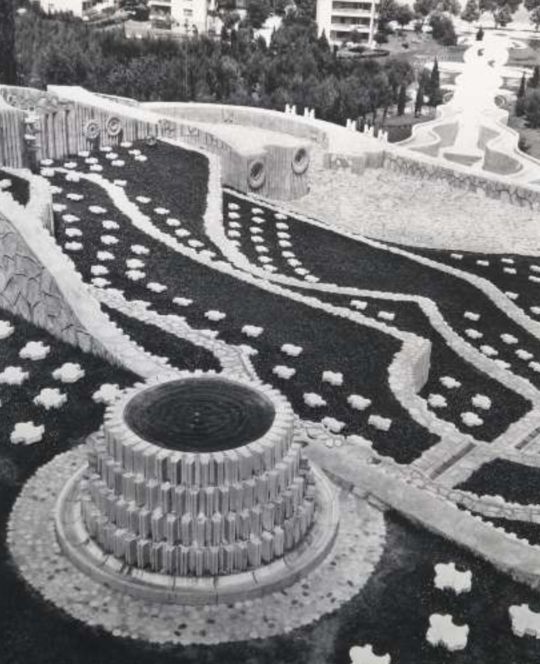
A view from the top of the cemetery before the latest conflicts.
The selection was made on the basis of the outstanding heritage significance and cultural value of each of the sites as well as on the basis of the serious danger that they are facing today. The level of engagement of local communities and the commitment of public and private stakeholders to saving these sites were considered as crucial added values. Another selection criterion was the potential of these sites to act as a catalyst for sustainable development and as a tool for promoting peace and dialogue within their localities and wider regions.

A view on the central fountain at the top of the site.

A sketch showing the path of the water flow.
The 11 endangered heritage sites were shortlisted by an international Advisory Panel, comprising experts in history, archaeology, architecture, conservation, project analysis and finance. Nominations for the 7 Most Endangered Programme 2023 were submitted by member organisations, associate organisations or individual members of Europa Nostra from all over Europe as well as by members of the European Heritage Alliance. For the Partisan Monument in Mostar a support was given among others also by Architectuul and DESSA Gallery from Ljubljana.

A cross-section of the cemetery and its terraces.
The Partisan Memorial Cemetery was built in 1965 in the town of Mostar. It is one of the largest anti-fascist monuments and sites in the Balkans, with its 300-metre-long paved ceremonial pathway rising more than 20 metres up a hill. The cemetery, which features some 700 individual tombstones as grave markers of freedom fighters from the Yugoslav Partisan movement, is part of a series of monuments and sites built in the region in memory of the partisans who died during World War II.
It was designed by the famous Yugoslav architect Professor Bogdan Bogdanović from Belgrade. Skilled stonemasons built the monument over several years, using over 12,000 carved limestone pieces, rubble from the town’s destruction during the war, and traditional stone roof tiles recycled from Mostar houses. The monument was inaugurated in 1965 by the President of Yugoslavia, Josip Broz Tito, on the occasion of the 20th anniversary of the liberation of Mostar from the Nazis and their local allies in 1945.
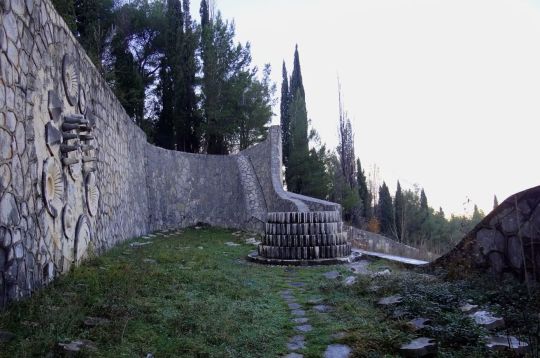
In front of the portal lies an a-centrically located gear-shaped fountain which used to develop a water stream that flowed down the terraces and emerged again in the dead end space at the bottom of the complex.
The Partisan Memorial Cemetery – with its memorial significance and relevance – has become a target for destruction, both in times of war and in times of peace. Although much damaged during the war in 1992-1995, the Partisan Memorial Cemetery suffered further damage in the period following the war. It is important to add that after the violent disintegration of Yugoslavia, many memorial sites built after World War II were neglected or even abandoned in the wider region, including the Partisan Memorial Cemetery in Mostar.
After the war, the first conservation and restoration works on the Partisan Memorial Cemetery were done in 2005 with the support of donor funds from the Government of The Netherlands and the Kingdom of Norway, and with co-financing from the City of Mostar and Federation of Bosnia and Herzegovina.
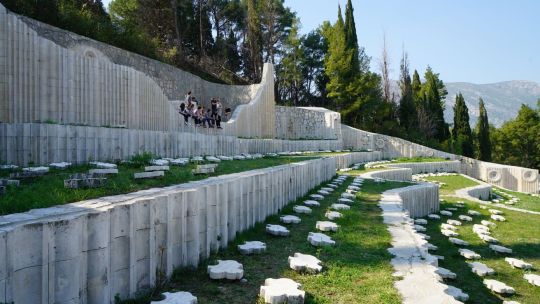
The complex is a necropolis, 630 abstractly shaped stone markers testify the multiethnic army that fought together and is buried here with names belonging to Serbs, Croats, Bosniaks, Jews.
However, the Partisan Memorial Cemetery has been, and still is, one of the region’s contested heritage sites. This has resulted in repeated acts of vandalism up until the most recent destruction which happened in June of 2022. This was followed by numerous reactions from the Mayor, the City Council, the Commission to preserve national monuments of Bosnia and Herzegovina, as well as from anti-fascist activists and associations both at local and international level, and also the reaction from numerous organisations from the territory of former Yugoslavia, which condemned the vandalism of the Partisan Memorial Cemetery. Recently, the Agency “Old City” of the City of Mostar launched the public procurement for the revitalisation, rehabilitation and illumination of the Partisan Memorial Cemetery. However, the monument does not yet have a holistic plan for its conservation and maintenance with a corresponding funding. The whole process of its necessary restoration and revitalisation therefore remains precarious.
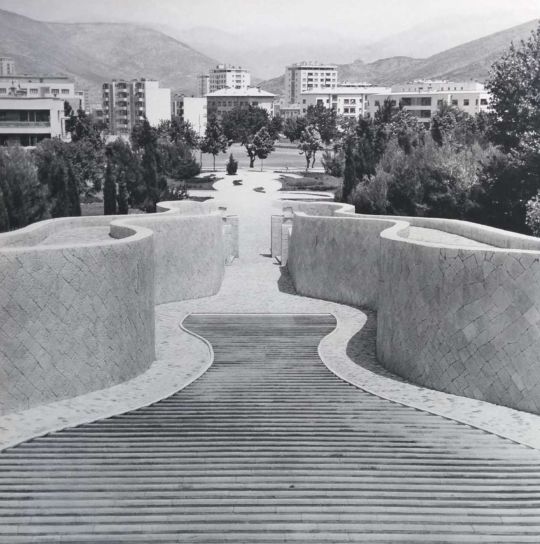
The partisan cemetery in Mostar is an integral part of the city and can be easily considered as an urban place.
The local community in Mostar has developed various campaigns for the legal protection of the Partisan Memorial Cemetery as a Monument of National Importance. Among other initiatives, they produced a documentary about the history of this memorial site and the threats and challenges it faces today.
The nomination of the cemetery to the 7 Most Endangered Programme 2023 was made by IDEAA Mostar with the endorsement of the Mayor of Mostar, the Galerija DESSA, Arcihtectuul and Europa Nostra Serbia. The nominator advocates for adequate legal protection of the Partisan Memorial Cemetery following its designation as a Monument of National Importance back in January 2006, for the European and international recognition of its outstanding historical and artistic values, as well as for the development of a sustainable rehabilitation, maintenance and management plan for this exceptional memorial site and the allocation of necessary funds – from local, national and European sources – for the quality implementation of such a comprehensive plan.
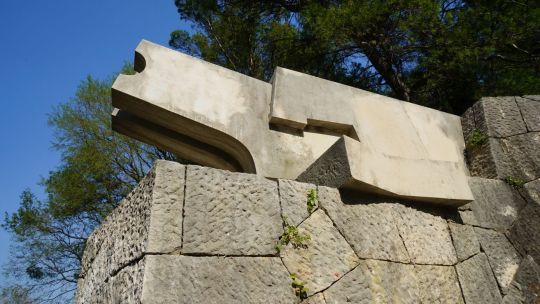
An abstract lion sculpture at the entrance of the complex.
The Advisory Panel of the 7 Most Endangered Programme commented: “The original design of the Partisan Memorial Cemetery in Mostar deliberately avoids the use of political or religious symbolism but makes use of cosmological symbols reminiscent of pre-Columbian remains and perhaps also referencing similar elements present in medieval sites in Bosnia and Herzegovina. As such, it is an outstanding example of the high-quality commemorative culture rooted in anti-fascist ideals within SFR Yugoslavia. At the time when Europe seeks to assert and put a much stronger emphasis on the vital importance of the shared values which form the very basis of the entire European project, this significant place of memory located in the Western Balkans should be restored with the support of local, national and European funds and protected for present and future generations.”

On Wednesday, June 15, 2022, vandals carefully and cold-bloodedly destroyed all the commemorative plaques.
The Executive President of Europa Nostra, Prof. Dr. Hermann Parzinger, stated: “This shortlist covers a wide variety of monuments and heritage sites which are facing different types of serious threats. The local communities and civil society organisations are deeply committed to preserving these remarkable examples of our shared heritage, but they need broader support. We therefore call on local, regional, national and European stakeholders, both public and private, to join forces with Europa Nostra and our network of members and partners to secure a viable future for these shortlisted sites.”

The "cosmic portal" is centrally located on the wall that backs the uppermost terrace. This circular element seems to act as a door between the two worlds and tries to reconcile the different visions that various religions have developed about the afterlife.
The final list of 7 Most Endangered heritage sites in Europe for 2023 will be unveiled in April.
21 notes
·
View notes
Photo

I can’t wait to start our next chapter together my love! Ryan proposed in the most amazing way possible! At the top of the Kalamegdan Fortress in Belgrade, Serbia overlooking the connection of the Sava and Danube Rivers 🥰 WE ARE ENGAGED! I love you @ryaguilar! . . . #engaged #kalamegdan #kalamegdanfortress #belgrade #engagement #savariver #danuberiver (at Kalemegdan Park and Belgrade Fortress) https://www.instagram.com/p/CqXqFhCqJcW/?igshid=NGJjMDIxMWI=
10 notes
·
View notes
Text
Ruzica Church and Kalemegan fortress in Belgrade, Serbia

3 notes
·
View notes
Text
I live in Belgrade, Serbia. Previous mentions pollution "choking the trees and makes creating green spaces difficult". So let me add some more context:
We already had people here explain this is not a replacement and that we have to plant trees, because while the tank is nice, we can't pop up a bunch of these as it will not solve the problem.
We lack trees because the people in charge have been cutting them down for years.
We lack parks because even when they build them, it's concrete or white paved spaces, not grassy surfaces.
Barely any parks are planned for and being built.
A lot of space is being sold to investors to build apartment buildings in the city center. This included tearing down a huge amount of small houses with yards and trees to build 4-5 story buildings.
Not to mention that a lot of objects over the past decades have been built illegally.
The huge part of the river front that was grassy, a part of which was supposed to be turned into a park, was sold to foreign investors and they're building (surprise, surprise) more luxury apartments there.
They cut down the trees in the fortress park because they wanted to build a cable car across the river. They were not allowed to build the cable car because the fortress is protected; yet no new trees were planted.
The algae tank is a nice scientific achievement but should also be a wakeup call to how many parks and green surfaces we lost and keep losing because of greedy politicians. The pollution isn't what's choking the green surfaces it's the fucking dictatorship.

132K notes
·
View notes